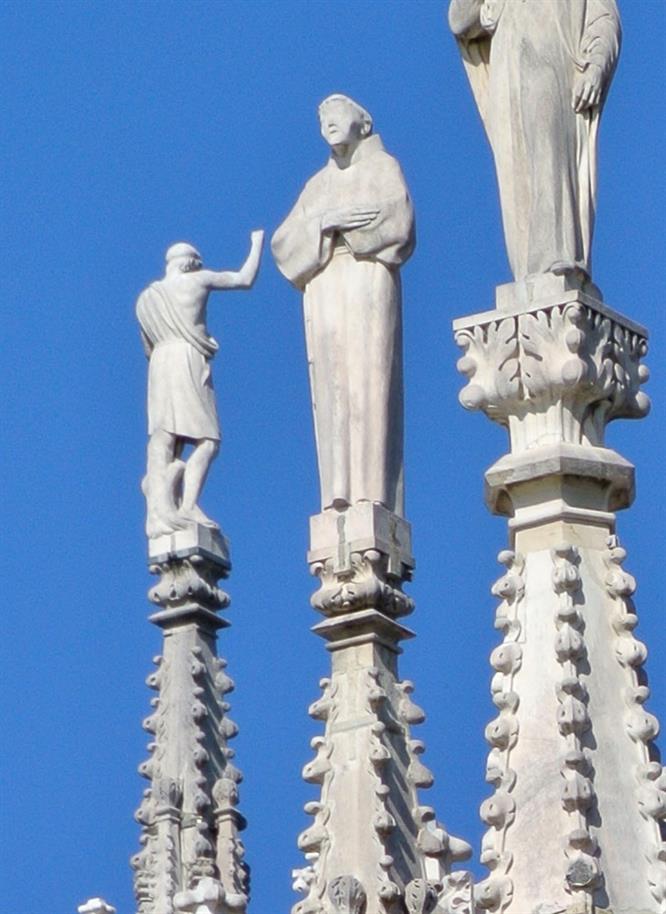Saint Francis was born in Assisi in 1182; he was the son of a merchant, so in his youth he aspired to be part of the small nobility of the city, until he understood his vocation. He then dedicated himself to a life of solitude and poverty, after having renounced his land assets and abandoned his family. In 1209 his first disciples joined him, and from this moment he began to preach the Gospel in the city. From 1210 he began to wander around the squares throughout Italy preaching the love of God and gathering large crowds of disciples everywhere. During the course of his life he managed to found three different Orders, dedicated to all those who wished to live as penitents. The remains of St. Francis are preserved in the Basilica dedicated to him in his hometown. He was canonized in 1228, then proclaimed patron saint of Italy together with Catherine of Siena in 1939.
The tales of the statue in Dome’s building site:
His statue – despite the fact that the saint is one of the founding fathers of the Catholic Church itself – has stood on the south side of the Cathedral only since 1953 and was sculpted by Franco Asco from Trieste, who was also the author of the model. The sculptor, who moved to Milan after participating with some works in the Venice Biennale, was one of the most active artists in Milan in those years.





 Tiburio
Tiburio

